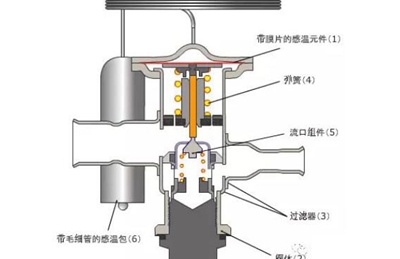
Telephone
025-52791167,52791168
13390905858
13390905858

ASCO Electromagnetic Valve Classification and Wiring Methods
1. Electromagnetic valve
Electromagnetic valve is an industrial equipment controlled by electromagnetic, which is an automation basic component used to control fluids. It belongs to actuators and is not limited to hydraulic or pneumatic systems. It is used in industrial control system to adjust the direction, flow, speed and other parameters of medium. Electromagnetic valves can be combined with different circuits to achieve the expected control, and the accuracy and flexibility of control can be guaranteed. There are many types of solenoid valves, and different solenoid valves play a role in different positions of the control system. The most commonly used are one-way valves, safety valves, directional control valves, speed control valves, etc.
2. Thermal expansion valve
The thermal expansion valve controls the flow rate of refrigerant entering the evaporator by controlling the degree of overheating of the gaseous refrigerant at the outlet of the evaporator. The thermal expansion valve achieves throttling from condensation pressure to evaporation pressure, while controlling the flow rate of refrigerant; Although it has a small volume, it plays a huge role. Its performance directly determines the quality of the entire system. It supplies liquid to the evaporator in the best way to ensure stable superheat of the refrigerant vapor at the outlet of the evaporator. The temperature sensor must have good contact with the suction pipe of the compressor to sense the suction temperature of the compressor.
one
3. Four way valve
Four way valve, a hydraulic valve term, is a control valve with four oil ports. The four-way valve is an indispensable component in refrigeration equipment. Its working principle is that when the solenoid valve coil is in a power-off state, the pilot slide valve moves left under the drive of the right compression spring, and high-pressure gas enters the capillary tube and enters the right piston chamber. On the other hand, the gas in the left piston chamber is discharged. Due to the pressure difference at both ends of the piston, the piston and the main slide valve move left, causing the exhaust pipe to connect with the outdoor unit pipe, and the other two pipes to connect, Form a refrigeration cycle.
4. Gate valve
The gate serves as the opening and closing component and moves vertically along the valve seat axis to achieve the opening and closing action of the valve. Gate valves can only be fully open and fully closed. The opening and closing component is the gate plate, which moves perpendicular to the direction of the fluid. The two sealing surfaces of a square I-shaped gate valve form a wedge shape, and the wedge angle varies with the valve parameters, usually 5 °. When the medium temperature is not high, it is 2 ° 52 ‘. Improving the processability of gate valves and compensating for deviations in sealing surface angles during the machining process, this type of gate is called an elastic gate.
5. Butterfly valve
Butterfly valve refers to a type of valve in which the closing element (disc or disc) is a disc that rotates around the valve axis to achieve opening and closing. It mainly plays a cutting and throttling role in pipelines. The butterfly valve opening and closing component is a disc-shaped butterfly plate that rotates around its own axis inside the valve body to achieve the purpose of opening and closing or adjusting. Butterfly valves are suitable for pipelines transporting various corrosive and non corrosive fluid media in engineering systems such as furnaces, gas, natural gas, liquefied petroleum gas, urban gas, hot and cold air, chemical smelting, and power generation environmental protection. They are used to regulate and cut off the flow of media. Butterfly valves are classified into: handle butterfly valves, turbine butterfly valves, pneumatic butterfly valves, electric butterfly valves, etc.
6. Ball valve
Ball valve refers to a valve that uses a ball with a circular through-hole as the opening and closing element, and the ball rotates with the valve stem to achieve the opening and closing action. In the standard GB/T21465-2008 “Valve Terminology”, it is defined as: the opening and closing part (ball) is driven by the valve stem and wound square
telephone:025-52791167,52791168
Fax:025-52791169
Phone :13390905858
mailbox:njxj888@163.com skype:yluedq
Address:Jiangning Shuanglong Avenue No.1222 Nanjing, Jiangsu. China P.O. 211100